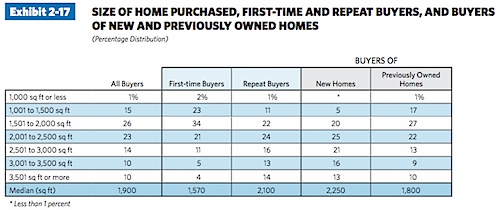A client asked me the other day, “what do you think rates are going to do”? The underlying question is, “should we rush to list, sell and buy now, or can we be more deliberate (and sane), and wait until Spring? What will interest rates be next week, next month, in the Spring? The markets – real estate, mortgage, stock – change. Frequently. I’m good at what I do, and part of what I do is to know what I’m good at (real estate), who’s good at what they do, and help my clients assemble the right team. So my answer to the question was to ask an expert – local lender Matt Hodges. There’s more to the answer than “up, down, sideways …” Thanks, Matt for the background, the answers and the history.
Where are Interest Rates Going?
As a loan officer, I get that question often. It’s not that I don’t want to answer it – I do, usually with a comment like “If I knew, I’d be a rich man trading bonds.” But, I can’t answer the question in the manner that it was asked. “Where are rates going, Matt?”
Before I give you my prediction for short term rate movements, after all it is an educated guess, let’s describe the underlying basis for mortgages, look at recent and not so recent history and let’s see what experts think will happen.
Fixed rate mortgages is really what we care about when discussing the future. Adjustable Rate Mortgages (ARMs) will nearly always be lower than fixed and follow an index called LIBOR – London Interbank Offered Rate, which is currently in the .5% range. That’s why current ARMs are adjusting downwards from their start rate to around 2.75%-3%. Forget ARMs – they are the exception not the rule for the mortgage world.
Fixed rate mortgages and specifically those sold to Fannie Mae, Freddie Mac or Ginnie Mae investors get pooled with other like loans – 30 year fixed, 80% loan to value, 750 or better FICO score for example – and sold to investors. Investors treat this investment much like you would consider an investment in the stock market.
Will prices go up and yields on the bonds go down over time and therefore my investment today will be worth more tomorrow to another investor? Or will the interest paid on the mortgage each month be a better investment than something else in the investor’s pool of opportunities? Since repayment of mortgages is front loaded – interest averaging about 69% of the principal and interest in the first year – does that make a better rate of return? Investors are not shy about buying mortgage backed security bonds. They believe in the inherent stability of our housing stock.
The history of fixed rate mortgages has been historically affected by external economic forces. Economic forces include whether more Americans claim jobless benefits in any given week, whether the unemployment rate goes up or down, and who is participating in that labor pool, how many new government and private sector jobs have been created in any given month, consumer confidence, manufacturing, inventories and a myriad of other reports that bombard us nearly daily. More recently, we are also affected by non-United States economic forces like where the German Bund (their bonds) is moving. Recently, German 2 year Bunds have traded in negative territory.
What? You can’t have a negative rate of return, can you? Investors in German bunds are willing to lose principal right now, compared to riskier investments. That affects us because if German investors don’t think there’s good economic prospects – say to purchase corporate bonds for a German manufacturing company, then US investors have less confidence in the US economy – Germans buy less of our exports – and hence they purchase more bonds, pushing the price up and the yields down. That affects your mortgage rate, pushing it down.
Mortgages have also been affected by intentional actions of governments. In the United States, the most recent and visible is Quantative Easing (QE). To simplify it to the most recent experience of QE III, in September, 2012, the Federal Reserve authorized the purchase of $45 billion of treasury bonds and $40 billion of mortgage backed securities EVERY month, indefinitely. The current Federal Reserve’s Federal Open Market Committee (FOMC) on Wednesday released a statement at the conclusion of their regularly scheduled two day meeting that the last of the QE buying has now ended. What happened in this interval with rates? For that answer, you actually have to look back a year or so. Anticipation of QE by investors is almost more powerful than the actual announcement. Rates merely improved slightly post announcement, but had been falling for the previous year by almost 1% in rate. The reason QE is powerful is that the government creates an artificial marketplace for bonds. That is, the Fed has decided that yields are too high to stimulate growth and therefore all investors will be forced to buy bonds at higher prices and accept lower yields, because the Fed is the 800 pound gorilla in the room. Their hope is that investors look to corporate issuances of debt – lets build more factories, employing more Americans, etc. More recently, Europe’s flirtation with QE has affected us as well. But, because they are many countries in the European Union (EU) and they lack a strong leader in Mario Draghi, often their announcements are met with indifference.
One of the voices in my head is Adam Quinones, Head of Mortgages and ABS at Thomson Reuters. He postulated on Tuesday in his daily email to bond traders and others in the industry, “Janet (Yellen, Fed Chair) would have to officially downgrade her global growth outlook (in order for rates to keep moving lower)” and “…dealers become the buyer of last resort again.” As discussed, as dealers are replacing the Fed, the artificial market is removed. Will dealers still enjoy low yields? Or, perhaps better stated, will dealers see an opportunity to swap bonds up and down the curve – from 26 week bills to 30 year bonds to make profit short or long term?
One of the smartest guys I know in the business is Matthew Graham, Chief Operating Officer for Mortgage News Daily and MBS Live and featured on CNBC from time to time. Today he made a seemingly odd movement in bonds rallying, while GDP print came in stronger than estimates – both treasuries and MBS – understandable to the masses: “Quite simply, European bond markets are in the midst of a strong rally this morning. Over the longer term, a super strong European bond market has helped to generally drag US rates lower than they otherwise would be. “
Janet Yellen, Federal Reserve chair since February, in question and answer period of the press conference after release of Fed Announcement in September: “You are certainly right in saying that over a number of years now, there’s been a pattern of forecast errors in which either we’ve been on track with respect to unemployment or unemployment has come down in some cases faster than we anticipated, and yet growth has pretty persistently been surprising the Committee to the downside. And that is a statement about productivity growth, which has been pretty disappointing. So we have had downward revisions in the level of potential output and to some extent, at least for a time, in the projected pace of growth.”
Okay, here are my thoughts. Virtually everyone I’ve read has predicted rates near or above 5% in the next 12 months. I don’t see it. I think volatility will be a constant – gyrations of rate movements tied to stock market swoons or dips or automated trading models picking up key words, causing a sell or a buy. While rates are in the low 4% range for conventional and mid 3% range for government, I don’t think we’ll see 5%. For Conventional loans, in the next three months, my range is 3.75% – 4.25% or mostly lower in range than current market. In the next six months, bets are off. We could be anywhere in a more-than-full point range, say 3.5% – 4.75%.
Twelve months from now, no worse than 4.75%, but that would be only a small chance. I make these comments not because I’m filled with Hopium, but because I think there are underlying problems with proclaiming our 5.9% unemployment rate as improving, when participation rates are so low. When job seekers fall off the radar at 99 weeks of unemployment, they aren’t counted any more. I think that Europe will have continual structural and employment problems. I think that as Chair Yellen has stated, the Federal Reserve is often wrong with their optimism.
Matt Hodges
Charlottesville Sales Manager
Presidential Mortgage Group
NMLS #295347







